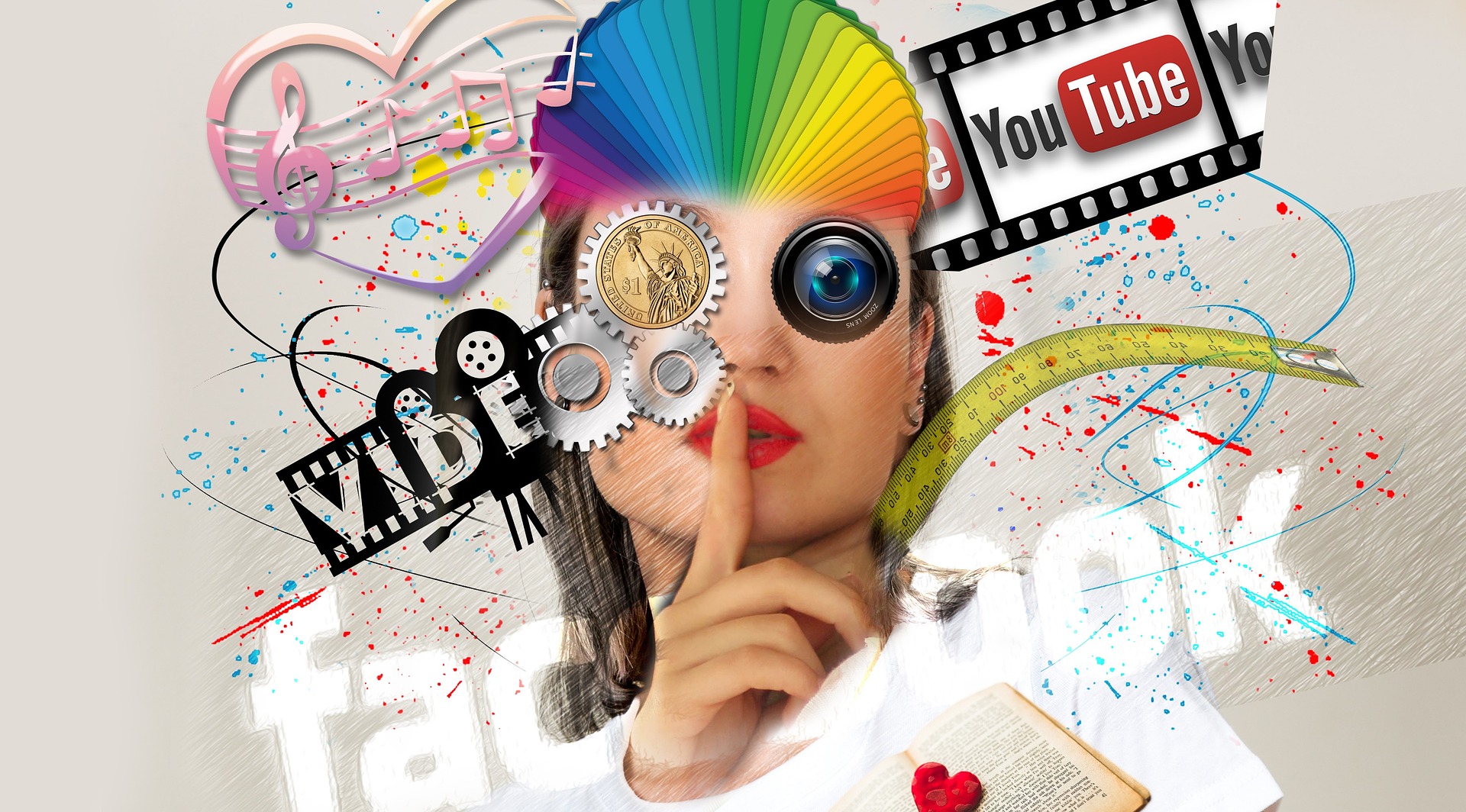AI Transformation
7 things to know about AI Audio Advertising
Read this article to learn ✓ Rise of audio ads ✓ AI for easy ad creation ✓ Boost engagement with streaming ► Click here!

Adriana
January 24, 2025

Why Audio Advertising?
Audio ads are perceived to be “more relevant, more attention-grabbing and more entertaining,” than traditional radio ads. While radio is more mainstream and generic, digital audio ads are more oriented to specific groups of listeners and can be personalized, making them a more efficient investment for companies. According to eMarketer, digital audio ads have an expected growth of 38.7% YoY (year-on-year).
However, creating great traditional audio ads can be slow and expensive. The production process usually requires studios, voice actors, and sound engineers. Nevertheless, technology is helping change this. That's why three passionate audio-lovers founded Aflorithmic, an AI audio solution which enables companies to create thousands of professional-quality audio ads in minutes, at a lower cost. AI voices, sound designs, personalization, localization, mastering and scalability are all possible through integration with API.audio.
What does the audio market look like?
62% of the U.S. population, approximately 204 million people, are listening to digital audio on a weekly basis according to Edison research, and in 2022, 21 million britons are regular podcast listeners, which is approximately 31% of the population. Both of these markets are expected to continue to increase in the coming years. That’s why, developing an audio advertising plan is vital in order to reach new audiences using ever-growing platforms such as Youtube and Spotify.
So if you want to expand your brand's reach, it's clear to see that the audience is there and worth the investment. But what is it exactly that you’ll be investing in, and what benefits will it bring to your business?
1. Engagement and Brand Awareness
For most audio ads, the primary objectives are two-fold: increase brand awareness and/or increase engagement.
Adobe research showed that 52% of consumers felt more engaged by audio ads, 57% felt they were more relevant to their needs and interests and almost half of audio streamers said that audio ads are less disruptive than other forms of advertising.
Not to mention, that Youtube’s own studies have confirmed that ‘From months of alpha testing, we found that more than 75% of measured audio ad campaigns on YouTube drove a significant lift in brand awareness.”
2. Platforms and Industries
Nowadays, however, Youtube isn’t the only digital audio streaming service. From Spotify, to Amazon music, to Deezer, to pretty much any podcast hosting platform, there are millions of people listening to audio adverts every day. Spotify alone has 209 million active free users, which equals 209 million audio ad listeners too.
With this wide range of platforms, comes the ability to reach audiences for a wide range of different industries. Some of the most popular of which are making use of audio advertising today include retail, consumer and household goods, financial services, fashion, beauty, automotive, education, and the health and fitness sector, amongst others.
Popular platforms, such as Spotify, and iHeartMedia have already been testing innovative audio advertising formats. For example, in mid-2020, Pandora.com (with third party services such as SoundCloud) was beta testing interactive voice ads for a small selection of brands, and since then the audio advertising market has grown exponentially to reach the point it is at today.
3. Benefits of AI Audio for Audio Ads
What makes AI Audio more efficient and effective for your advertising needs and business overall?
First of all, there is the factor of timeliness. Imagine you have a limited time offer, where you need to promote a specific product or service that is only available for the next 72 hours. It would be almost impossible to hire a recording studio, voice actor and sound engineer to produce the audio ad, listen to it and modify it if required to improve the promotion, for example. So using an AI solution to produce audio ads can be 100X faster than usual.
Second, the reduced cost. Producing audio ads using Aflorithmic’s API.audio technology, the cost is reduced by 99% as artificial intelligence makes it possible in just a few steps. Starting with a simple ad script, then choosing an AI voice and sound design, and last but not least, adding a professional-quality, fully mixed, mastered touch to the final audio.
4. Personalization
Personalization means that one ad can be tailored towards any user according to their age, gender, city or more. For example, a German or Spanish user living in London might listen to the same ad in German and Spanish respectively, instead of the general version in English for London. According to a 2021 ad personalisation report by Postclick, marketers investing in personalisation “maximize their marketing-spend efficiency, meet or exceed revenue targets, and earn a high return on investment”. This explains why 50% of marketers say they are willing to try new personalisation methods, and 43% of listeners said that a personalized audio ad is more relevant to them, according to Pandora’s research.
5. Scalability: Automation and Growth
Automation for audio ads on a global scale is quite difficult these days. However, Aflorithmic’s versioning feature includes personalization, localization and dynamic audio. In short, this means that one simple script can be converted into thousands of different versions, each of them using different names, dates or products, or any other specific personalization parameters required. This therefore unlocks a method of audio ad creation in a way that would never be possible with traditional audio production. To start scaling audio ads for your business click here.
6. Best practices
Creating an audio ad is easy, but creating a great one, not so much. That's why we’ve put together this list of the three best practices for audio ad creation, to help business' create the best, most effective audio ads possible for their audience.
a. Sonic Branding
Make your brand instantly recognisable to your audience with a jingle, a specific voice with or without an accent, a unique sound template or a special sound effect that no other company would use. A unique cloned voice would also be a great differentiator too. For example, being able to have your company's CEO thanking each customer after they make a purchase, or voicing company campaigns that have a personal touch. Custom audio files can also be embedded in the AI audio you create. So with the effective use of sonic branding, audio can be not just engaging, but memorable too.
b. Substance over length
79% of video consumption takes place in parallel with other activities according to Nielsen, during which time, consumers might not even be in front of a screen. This is why audio is so important. For ads on Spotify for example, you don't need to worry about cramming the most important part of your ad into the first five seconds as users won’t be skipping or switching off for an ad which is meant to be 30 seconds or less. Through other platforms like Youtube however, audio ads can be between 15-60 seconds, with the 30 second average being a good choice due to it's higher View-Through Rates on Youtube. This means it's more important to focus on the message you want to get across, rather than the length of the audio ad.
c. End with a call-to-action
Inspire your listeners to take action after hearing your ad. The first rule of advertising is always include a CTA (Call-To-Action), and this still stands for audio. Audio ads with CTAs have been known to see a 4.4x lift in footfall than those which don’t. What is it that you want them to do, see, or buy? You can create a sense of urgency with a limited time offer, or create a sense of exclusivity and time-sensitivity that is more likely to encourage the user to take an online action. For example, click the banner, book now, or take an offline action like start enjoying (for consumer goods) or visit us in-store (for a limited-time promotion on a product available only in supermarkets).
7. Metrics to measure performance
So once your engaging and effective audio ads have been created with api.audio, how will you know how successful they have been for your brand awareness or business campaign? The answer is by measuring metrics.
Impressions
Impressions refer to the amount of times your audio ad has been shown to your targeted audience. It will vary according to the target audience, budget, other advertisers and time frame of analysis. For example, an audio ad in a city with 1 million people vs one with 10 million would not be the same, spending a budget of 500€ vs 10.000€, or measuring daily results vs weekly results. All of these factors will affect the total number of impressions in your campaign.
Completion rate
It may not come as a surprise that one of the biggest obstacles for digital advertising today is the dreaded ‘Skip’ button. In almost all audio streaming platforms, it’s now possible to skip the ad part way through, except the free version of Spotify. However, don't fret because audio advertising bodes well in this department.
In fact, Trinity audio’s research shows that the total audio ad completion rate of 91% indicates that nearly everyone who listened to audio content also heard an advertisement in its entirety. With 15-second ads coming in at an impressive 91.7% completion rate, and 30-second ads not far behind with a 90.5% completion rate.
Clicks and CTR
CTR stands for Click Through Rate, and this is the number of clicks on your ad over the total number of impressions. A good average benchmark is between 1-3%. It will depend on the creativity, the audio, the voice, the script, how relevant is the message for the user and the moment it is displayed. However, the better the quality of your audio overall, the more likely it is to help raise your CTR.
Cost per Reach
Cost per Reach is the comparison between the amount of money spent during a specific period of time, in relation to the amount of people impacted by the audio ad, also known as the reach. Therefore, the more people that are engaged by and take action after listening to your ad, the lower your cost per reach will be.
Launch AI Audio ads for your business
With Aflorithmic’s technology, not only are you able to create audio ads of a professional quality that meets Spotify’s and Youtube standards, but integrating API.audio provides features which will enable the output of amazing dynamic audio at scale. Produce professional audio ads in minutes, not days, at a fraction of the cost using Aflorithmic's AI Audio ad infrastructure for your business.
Book Sam Today
About
AudioStack is a London/Barcelona-based technology company. Its platform enables fully automated, scalable audio production by using synthetic media, voice cloning, and audio mastering, to then deliver it on any device, such as websites, mobile apps, or smart speakers.
With this Audio-As-A-Service, anybody can create beautiful sounding audio, starting from a simple text to including music and complex audio engineering without any previous experience required.
The team consists of highly skilled specialists in machine learning, software development, voice synthesizing, AI research, audio engineering, and product development.
Sources:
About AudioStack
AudioStack is the world's leading end-to-end enterprise solution for AI audio production. Our proprietary technology connects AI-powered media creation forms such as AI script generation, text-to-speech, speech-to-speech, generative music, and dynamic versioning. AudioStack unlocks cost and time-efficient audio that is addressable at scale, without compromising on quality.
